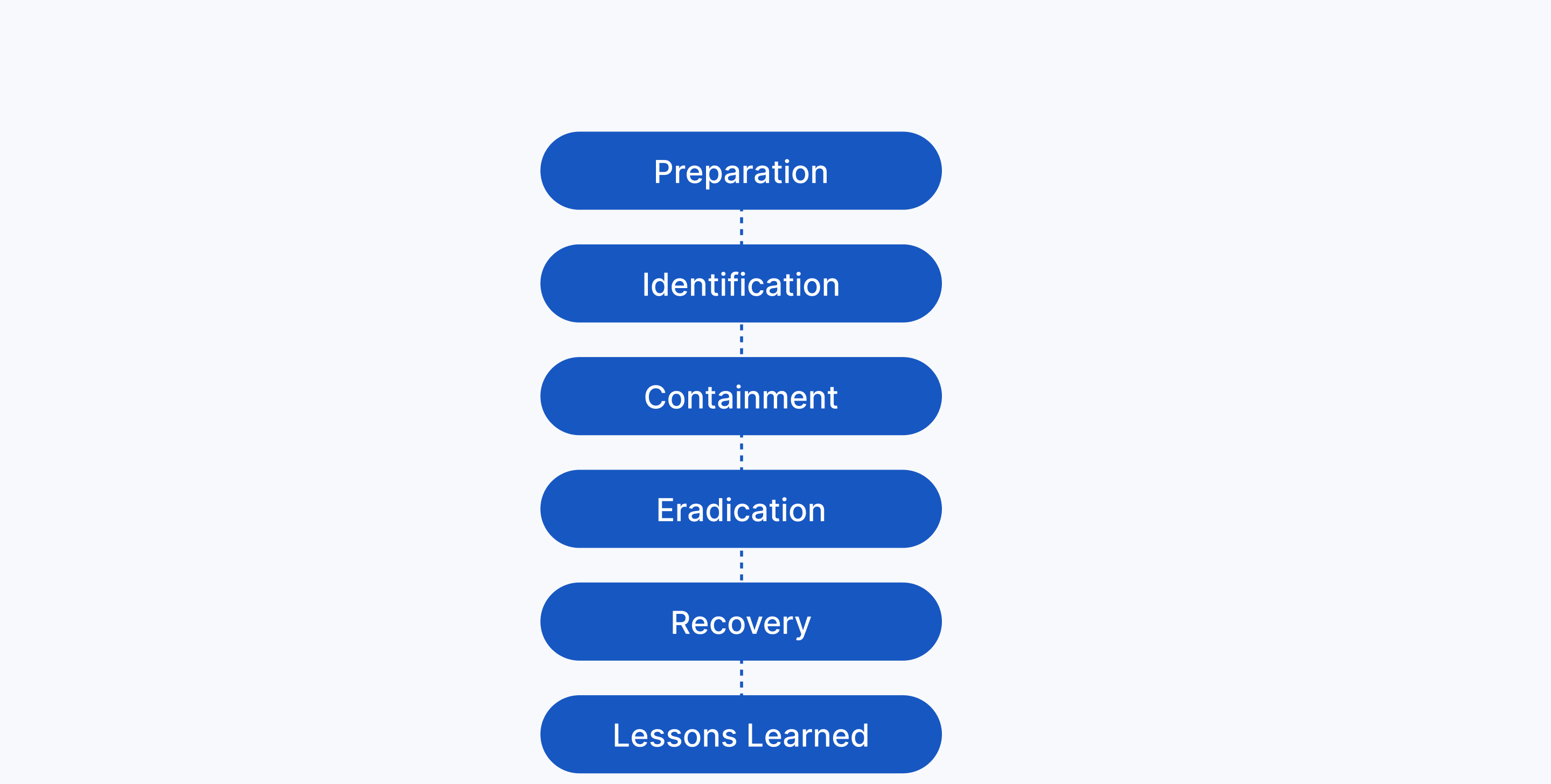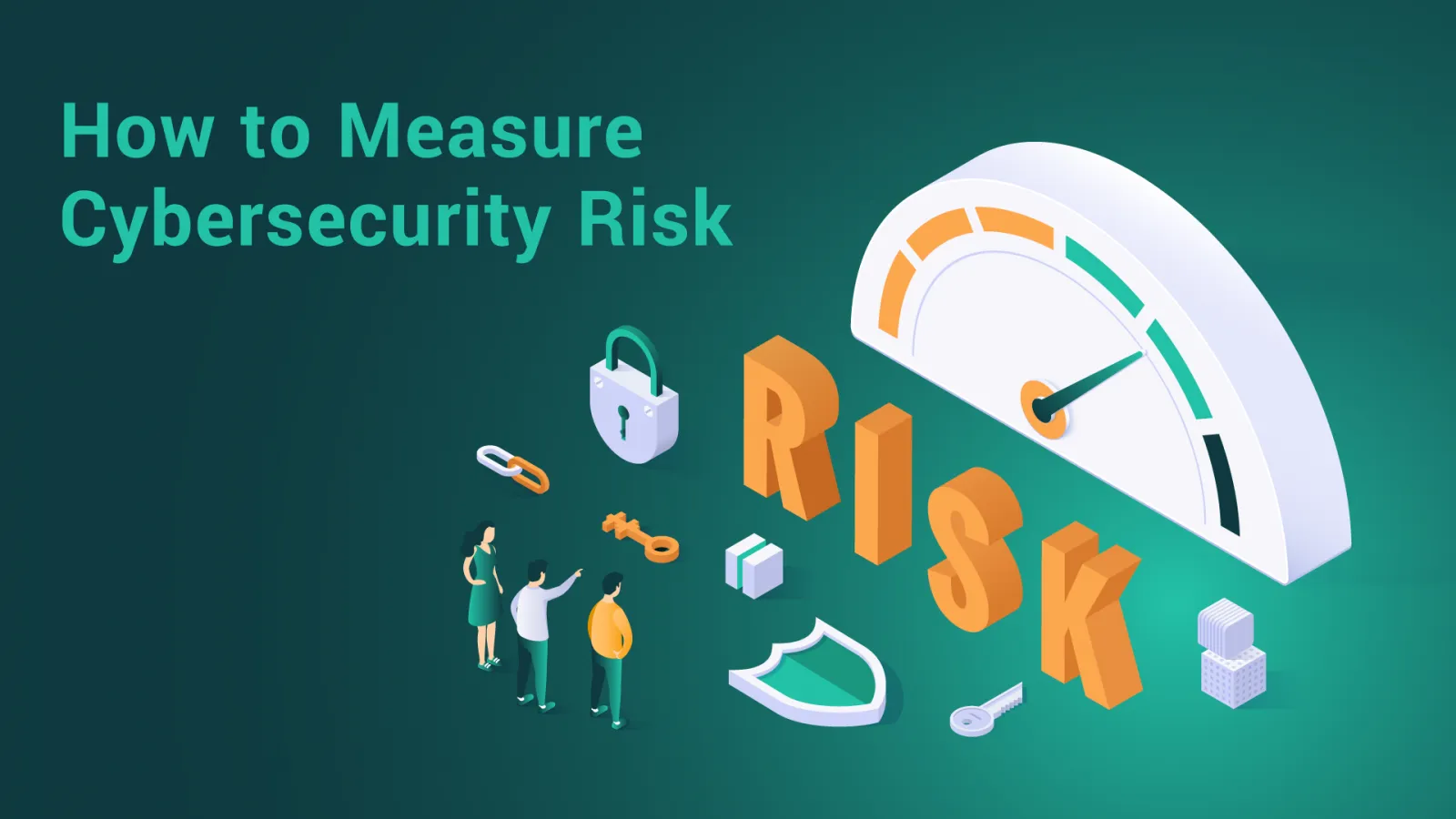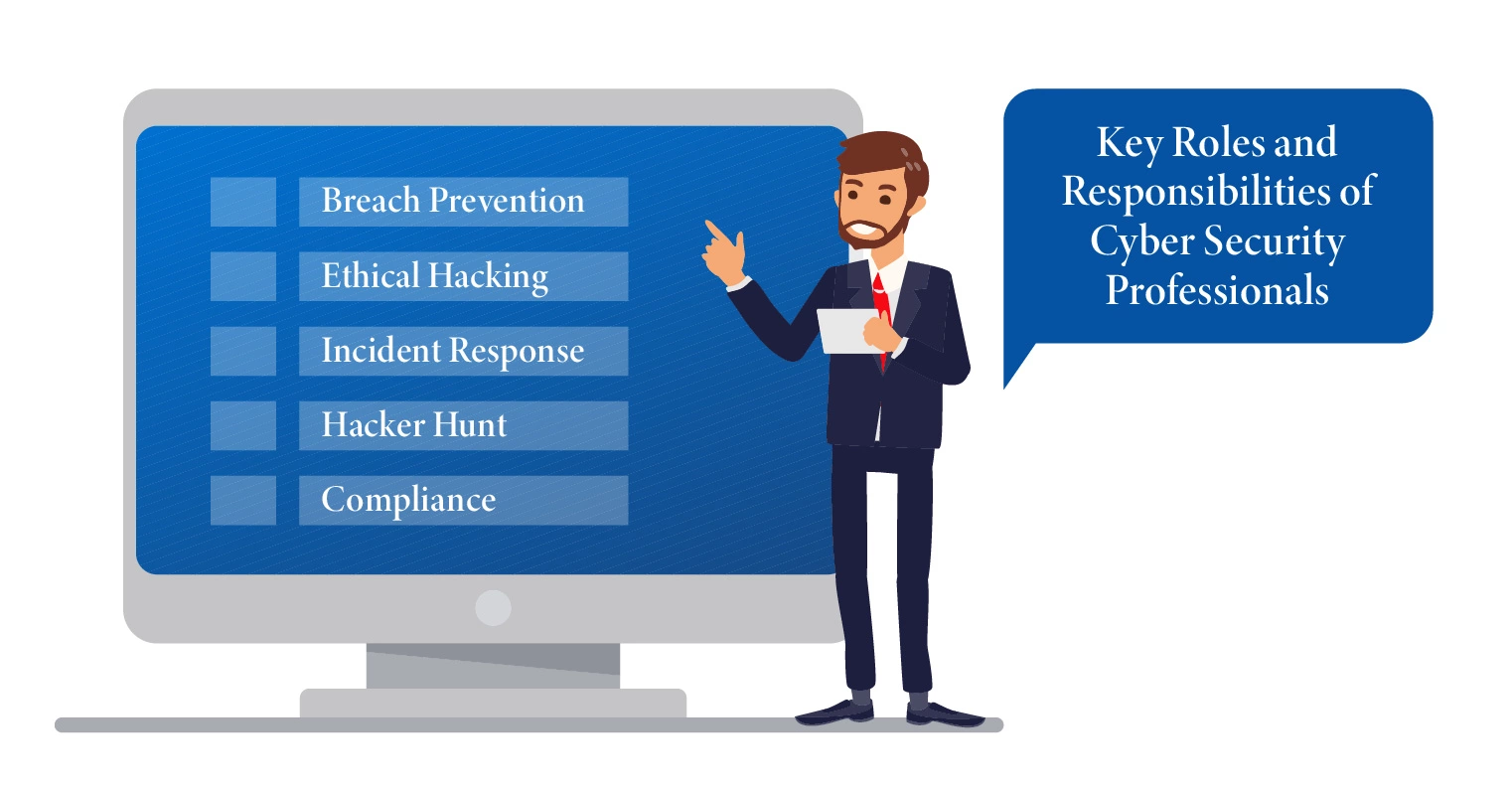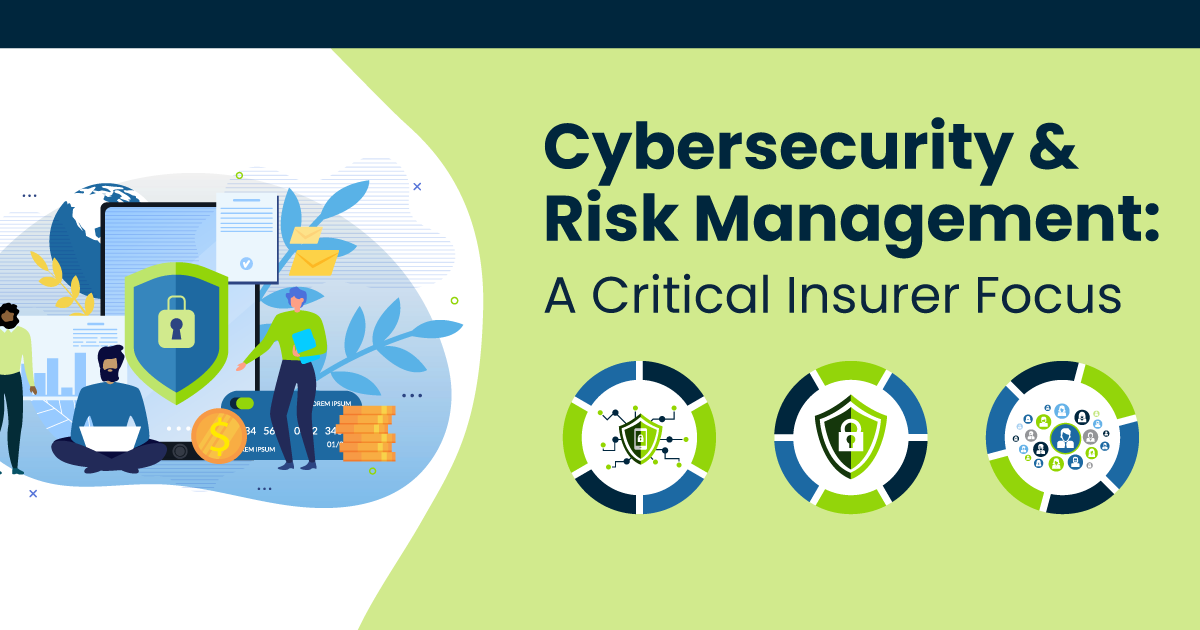Introduction
Welcome to the world of cybersecurity and incident response planning. In today’s digital age, businesses face a constant threat from cyberattacks, data breaches, and other cybersecurity incidents. These incidents can lead to severe financial loss, reputational damage, and legal consequences. To effectively mitigate these risks, businesses must have a well-defined and comprehensive cybersecurity incident response plan in place.
A cybersecurity incident response plan is a strategic framework that outlines how an organization will respond to and recover from cybersecurity incidents. It provides a systematic approach for detecting, responding to, and resolving incidents in a timely and efficient manner. This plan encompasses policies, procedures, and guidelines that help organizations minimize the impact of incidents and restore normal operations as quickly as possible.
With the increasing frequency and sophistication of cyber threats, having a proactive incident response plan is no longer optional – it’s a necessity. By having a plan in place, businesses can minimize the disruption caused by incidents, protect sensitive data, and maintain the trust of their customers, partners, and stakeholders.
In this article, we will delve into the importance of a cybersecurity incident response plan, discuss its key components, and provide insights on creating and testing an effective plan. We will also explore incident response best practices and the role of technology in streamlining the incident response process.
So, whether you are an IT professional, a business owner, or simply interested in the world of cybersecurity, this article will help you understand why a cybersecurity incident response plan is crucial in today’s digital landscape.
What is a Cybersecurity Incident Response Plan?
A cybersecurity incident response plan is a strategic document that outlines the procedures and protocols to follow in the event of a cybersecurity incident. It serves as a guide for organizations to effectively detect, respond to, and recover from security breaches, data leaks, malware attacks, or any other form of cyber incident that may compromise the confidentiality, integrity, or availability of critical systems and information.
The main objective of a cybersecurity incident response plan is to minimize the impact of an incident and ensure a swift and coordinated response to mitigate the damage. It provides a structured framework for organizations to follow, enabling them to handle incidents efficiently and effectively, while minimizing downtime and financial losses.
At its core, a cybersecurity incident response plan involves a series of predefined steps and actions that teams should take in response to specific types of incidents. These steps often include incident detection, containment, analysis, eradication, recovery, and post-incident activities such as lessons learned and improvement recommendations.
By having a well-defined incident response plan in place, organizations can streamline their response efforts, reduce the time it takes to identify and resolve an incident, and minimize the potential damage caused by the incident. Through clear roles, responsibilities, and communication pathways, an incident response plan ensures that the right people are involved and that actions are coordinated and aligned.
In addition to the technical aspects of responding to incidents, a cybersecurity incident response plan also includes provisions for legal, public relations, and regulatory compliance considerations. This ensures that organizations address the potential legal and reputational consequences of a cybersecurity incident and adhere to any applicable laws and regulations.
Ultimately, a cybersecurity incident response plan is a proactive approach to managing and mitigating cybersecurity incidents. It helps organizations establish a culture of preparedness, allowing them to respond swiftly, minimize damage, and reduce the overall impact on their operations, reputation, and stakeholders.
Why do businesses need a Cybersecurity Incident Response Plan?
In today’s digital landscape, businesses of all sizes and industries are exposed to a myriad of cybersecurity threats. Cyberattacks are evolving rapidly, becoming more sophisticated and persistent. In this environment, having a cybersecurity incident response plan is no longer a luxury, but a crucial necessity for businesses. Here are some key reasons why businesses need a cybersecurity incident response plan:
- Rapid detection and response: Cybersecurity incidents can happen at any time. Having a well-defined incident response plan allows businesses to detect and respond to incidents promptly, minimizing their impact. A quick response can help prevent the escalation of an incident, limit damage, and prevent unauthorized access to critical systems and data.
- Minimize financial losses: Cybersecurity incidents can have significant financial consequences. The cost of recovering from an incident, investigating the breach, implementing new security measures, and potential legal fees can be exorbitant. A cybersecurity incident response plan helps businesses minimize these financial losses by efficiently managing the incident and reducing the time it takes to resolve and mitigate the impact.
- Protect sensitive data: Businesses handle a vast amount of sensitive and confidential data, including customer information, trade secrets, financial records, and intellectual property. A cybersecurity incident response plan ensures that proper measures are in place to protect this valuable information, preventing unauthorized access or disclosure.
- Maintain customer trust: A cybersecurity incident can damage a business’s reputation and erode customer trust. A well-prepared incident response plan demonstrates that a business takes security seriously and has proactive measures in place to handle potential incidents. By minimizing the impact of an incident and communicating effectively with customers, businesses can maintain trust and loyalty even during challenging times.
- Comply with regulations: Many industries are subject to regulatory requirements regarding data protection and incident response. Having a cybersecurity incident response plan ensures that businesses comply with these regulations and are prepared to address any legal or compliance obligations triggered by an incident.
Overall, a cybersecurity incident response plan provides businesses with a structured and proactive approach to handle cybersecurity incidents effectively. It helps organizations reduce the risk, impact, and recovery time associated with incidents and demonstrates a commitment to protecting critical systems, data, and stakeholders.
Key components of a Cybersecurity Incident Response Plan
A well-designed cybersecurity incident response plan should incorporate several key components to ensure a comprehensive and effective response to incidents. These components work together to provide a structured framework for incident detection, response, and recovery. Let’s explore the critical elements that should be included in a cybersecurity incident response plan:
- Roles and responsibilities: Clearly define the roles and responsibilities of individuals involved in the incident response process. This includes designating incident response team members, incident coordinators, and communication points of contact. Document their responsibilities during each phase of incident response, ensuring everyone knows their specific duties and who to report to.
- Incident classification: Establish a classification system for incidents based on severity and impact. This classification schema will help determine the appropriate response actions and escalation procedures for each type of incident.
- Communication plan: Develop a communication plan that details how communication will be managed during an incident. This includes internal communication among the incident response team and external communication with stakeholders, customers, vendors, and regulatory bodies. Include contact information for key individuals and have pre-drafted communication templates ready to use in case of an incident.
- Incident detection and reporting: Define procedures for incident detection and reporting, ensuring that potential incidents are identified and reported promptly. This includes implementing monitoring tools, intrusion detection systems, and establishing reporting channels for employees to report suspected incidents.
- Containment and eradication: Specify the steps and procedures for containing an incident to prevent its further spread and for eradicating the root cause of the incident. This may involve isolating affected systems, disabling compromised accounts, or removing malicious software.
- Forensic investigation: Determine how forensic investigation will be conducted to determine the cause and extent of the incident. This involves preserving evidence, conducting analysis, and collecting data necessary for identifying the attacker and understanding the impact of the incident.
- Incident recovery: Establish a plan for recovering operations and systems after an incident. This may involve restoring backups, applying security patches, or implementing additional security measures to prevent similar incidents in the future.
- Documentation and reporting: Emphasize the importance of documenting all incident response activities, including actions taken, decisions made, and lessons learned. This information can be invaluable for post-incident analysis, continuous improvement, and reporting to management or regulatory bodies.
- Review and update: Regularly review and update the incident response plan to reflect changes in the organization’s infrastructure, technologies, regulations, and threat landscape. This ensures that the plan remains effective and relevant over time.
These key components form the foundation of a robust cybersecurity incident response plan. By incorporating these elements, businesses can effectively detect, respond to, and recover from incidents, minimizing the damage caused and ensuring a swift return to normal operations.
Creating a Cybersecurity Incident Response Plan
Developing a well-defined cybersecurity incident response plan is crucial for businesses to effectively address and mitigate the impact of security incidents. Here are the steps to create an effective incident response plan:
- Assess your organization’s needs: Understand your organization’s specific cybersecurity risks, compliance requirements, and business objectives. Identify the critical assets, systems, and data that need protection and prioritize them based on their importance to the business.
- Assemble an incident response team: Form a dedicated incident response team comprising individuals with diverse skill sets, including IT professionals, security experts, legal and compliance personnel, and communication specialists. Define the team’s roles and responsibilities and ensure they have the necessary training and resources.
- Define incident response procedures: Clearly document step-by-step procedures for each phase of incident response, including detection, containment, analysis, eradication, recovery, and documentation. Specify the actions to be taken, tools to be used, and protocols to follow during each stage.
- Create a communication plan: Develop a communication plan that outlines how incidents will be reported, who needs to be informed, and how information will be shared internally and externally. Establish clear communication channels and contact lists for incident reporting and response coordination.
- Establish incident detection and monitoring capabilities: Implement robust monitoring systems and intrusion detection tools to promptly detect and alert you to potential security incidents. This allows for early detection and faster response, minimizing the impact of incidents.
- Test your plan: Regularly conduct simulated drills and tabletop exercises to test the effectiveness of your incident response plan. This helps identify any gaps or deficiencies in your procedures and allows you to refine and improve the plan accordingly.
- Train your team: Provide comprehensive training to your incident response team and relevant stakeholders on their roles, responsibilities, and the incident response procedures. Stay updated on the latest threats, attack techniques, and countermeasures to ensure your team is well-prepared to handle emerging cybersecurity incidents.
- Collaborate with external resources: Establish relationships with external resources such as incident response service providers, cybersecurity experts, and law enforcement agencies. Their expertise and resources can be invaluable during a complex and sophisticated incident.
- Regularly review and update your plan: Continuously evaluate and update your incident response plan to incorporate lessons learned from real incidents and reflect changes in your organization’s infrastructure, technologies, and threat landscape. Stay current with emerging trends and best practices in cybersecurity incident response.
Remember, a cybersecurity incident response plan should be a living document that evolves alongside your organization. By following these steps, you can create a proactive and effective incident response plan that enables your organization to respond swiftly and effectively to any cybersecurity incident.
Testing and updating your Cybersecurity Incident Response Plan
Creating a cybersecurity incident response plan is an essential step, but it doesn’t stop there. To ensure its effectiveness, it is crucial to regularly test and update the plan. This allows you to identify any weaknesses, address gaps, and adapt to the ever-evolving threat landscape. Here are some key considerations for testing and updating your incident response plan:
- Conduct regular simulations: Perform simulated drills and tabletop exercises to simulate real-world scenarios and test your incident response capabilities. This helps validate the effectiveness of your plan, identify potential bottlenecks or issues, and enhance the coordination and communication among your incident response team.
- Collaborate with other stakeholders: Involve individuals from different departments and teams within your organization in the testing process. This can include representatives from IT, HR, legal, and senior management. This promotes a multi-disciplinary approach and ensures that everyone understands their role and responsibilities during an incident.
- Assess and analyze test results: After each testing exercise, thoroughly evaluate the results and identify areas for improvement. This might include updating procedures, addressing communication gaps, or enhancing technical controls. Use the insights gained from the testing process to refine your plan and enhance its effectiveness.
- Stay updated on emerging threats: Regularly monitor the changing cybersecurity landscape and stay informed about emerging threats, attack techniques, and vulnerabilities relevant to your organization. This enables you to proactively update your incident response plan to address the evolving threat landscape and ensure its relevancy.
- Engage in continuous training: Provide regular training and education to your incident response team, keeping them up to date with the latest industry trends, incident response techniques, and tools. This ensures that your team has the necessary skills and knowledge to effectively respond to incidents.
- Establish a feedback loop: Create a mechanism for employees to report potential vulnerabilities or incidents they identify. Encourage a culture of openness and constantly seek feedback from those involved in incident response to continuously improve the plan.
- Collaborate with external experts: Engage with external incident response experts and consultants to review and provide insights into your plan. Their expertise can help identify potential blind spots and provide recommendations for improvement based on their experience and knowledge.
- Review and update on a regular basis: Set a schedule for regular review and update of your incident response plan. This ensures that your plan aligns with the evolving threat landscape, regulatory requirements, and organizational changes. Consider conducting a formal review annually, or more frequently depending on the nature of your business.
By regularly testing and updating your incident response plan, you can ensure that it remains relevant, effective, and aligned with your organization’s needs. This proactive approach helps strengthen your incident response capabilities and enhances your ability to detect, respond to, and recover from cybersecurity incidents. Remember, incident response is a continuous process, and your plan should adapt and evolve alongside the changing threat landscape.
Incident response best practices
When it comes to incident response, following best practices is crucial to effectively manage and mitigate the impact of cybersecurity incidents. Here are some key best practices that organizations should consider implementing:
- Preparation is key: Develop a proactive incident response plan and ensure all relevant stakeholders are familiar with it. Regularly review and update the plan to reflect changes in your organization and the threat landscape.
- Establish clear roles and responsibilities: Clearly define the roles and responsibilities of your incident response team members, including incident coordinators, technical experts, legal advisors, and communication liaisons. This ensures a coordinated and efficient response during an incident.
- Implement an incident categorization system: Classify incidents by severity and impact to enable a faster response and escalation of critical incidents. This helps allocate appropriate resources and response efforts based on the nature of the incident.
- Focus on swift detection: Implement robust monitoring tools and intrusion detection systems to quickly detect and respond to potential incidents. Early detection allows for timely containment and mitigation of the impact.
- Adhere to a documented response plan: Ensure that your incident response plan includes clear and well-defined response procedures for each phase of the incident response lifecycle. This includes incident detection, containment, analysis, eradication, recovery, and post-incident analysis.
- Communicate effectively: Establish a communication plan, including both internal and external communication channels, to ensure all stakeholders are informed about the incident. This includes employees, customers, partners, regulators, and any relevant third parties.
- Collaborate with external resources: Establish relationships with external incident response experts, law enforcement agencies, and cybersecurity vendors. Their expertise and resources can be valuable in mitigating and investigating sophisticated incidents.
- Employ a lessons learned approach: After every incident, conduct a post-incident review to identify areas for improvement. Incorporate the lessons learned into your incident response plan and update your security controls and processes accordingly.
- Regularly train and test: Provide continuous training to your incident response team, keeping them up to date with the latest incident response techniques and industry trends. Conduct regular testing and simulation exercises to evaluate the effectiveness of your plan and identify areas for improvement.
- Stay informed about regulatory requirements: Stay up to date with relevant regulatory obligations and ensure your incident response plan is aligned with these requirements. This includes data breach notification laws, industry-specific regulations, and privacy regulations.
By following these incident response best practices, organizations can strengthen their incident response capabilities, minimize the impact of incidents, and maintain business continuity. Remember, incident response is an ongoing process, and regular review, improvement, and collaboration are key to effective incident management.
The role of technology in incident response
In today’s digital landscape, technology plays a critical role in incident response, enabling organizations to detect, respond to, and recover from cybersecurity incidents more effectively and efficiently. Here are some key ways in which technology supports incident response:
- Threat intelligence: Technology provides access to threat intelligence feeds, which help organizations stay updated on the latest cyber threats, vulnerabilities, and attack techniques. This information allows incident response teams to anticipate and identify potential risks, enhancing their ability to detect and respond to incidents.
- Monitoring and detection: Robust monitoring tools, intrusion detection systems (IDS), and security information and event management (SIEM) solutions help organizations monitor network traffic, logs, and system activities in real-time. These technologies enable the detection of suspicious behavior, unauthorized access attempts, malware infections, and other indicators of a potential security incident.
- Endpoint protection: Endpoint protection solutions, including antivirus software, host-based intrusion detection systems (HIDS), and endpoint detection and response (EDR) tools, play a vital role in incident response. They provide real-time threat detection and response capabilities, allowing organizations to quickly isolate and contain affected endpoints during an incident.
- Incident response platforms: Incident response platforms provide centralized management and automation of incident response activities. These platforms help streamline incident handling processes, facilitate collaboration among team members, track incident progress, and ensure the proper documentation of incident response activities.
- Forensic tools: Forensic tools enable investigators to collect, analyze, and preserve digital evidence during incident response. These tools help identify the root cause of incidents, track the actions of an attacker, and support incident response teams in making informed decisions during the investigation process.
- Data backup and recovery: Robust backup and recovery solutions ensure the availability and integrity of critical data during and after an incident. Regularly backing up data helps organizations restore operations efficiently, minimizing downtime and reducing the impact of an incident.
- Automated incident response: Automation technologies, such as security orchestration, automation, and response (SOAR) platforms, help automate repetitive and time-consuming tasks in incident response. This allows incident response teams to focus on critical activities and accelerates response times.
- Continuous monitoring: Continuous monitoring solutions provide real-time visibility into network and system activities. By proactively monitoring for anomalies, abnormal behavior, and indicators of compromise (IOCs), organizations can detect and respond to incidents promptly, reducing the time between compromise and remediation.
- Security analytics: Advanced security analytics solutions leverage machine learning and artificial intelligence algorithms to identify patterns, anomalies, and potential threats in large volumes of data. These technologies enhance incident detection and assist in incident response by providing actionable insights and prioritizing response efforts.
- Cloud-based incident response: Cloud-based incident response platforms and services offer the flexibility and scalability required to handle incidents across geographically dispersed environments. These solutions facilitate collaboration, streamline incident response workflows, and provide access to essential tools and data from anywhere, anytime.
While technology is a critical enabler in incident response, it is important to remember that it should be complemented by skilled incident response professionals and well-defined processes. The combination of technology, people, and processes enhances organizations’ ability to respond swiftly and effectively to cybersecurity incidents.
Conclusion
In today’s increasingly digital world, the need for a well-designed and comprehensive cybersecurity incident response plan cannot be overstated. Cybersecurity incidents pose significant risks to businesses, including financial loss, reputational damage, and legal consequences. By having a solid incident response plan in place, organizations can effectively detect, respond to, and recover from incidents, minimizing the impact and restoring normal operations.
Throughout this article, we have explored the key components of a cybersecurity incident response plan, the importance of creating and testing the plan, incident response best practices, the role of technology in incident response, and the need for regular updates to the plan. These elements collectively enable businesses to handle security incidents in a systematic, coordinated, and efficient manner.
Remember, incident response is not a one-time effort but an ongoing process. Organizations must continuously review, test, and update their incident response plans to address emerging threats, changing regulatory requirements, and evolving business operations. By staying prepared, organizations can strengthen their incident response capabilities and minimize the potential damage caused by cyber incidents.
In conclusion, a well-crafted cybersecurity incident response plan, supported by skilled professionals and appropriate technologies, is a vital component of any organization’s cybersecurity strategy. By proactively planning and implementing incident response best practices, businesses can effectively mitigate risks, protect critical assets, and maintain the trust of their customers, partners, and stakeholders.

























